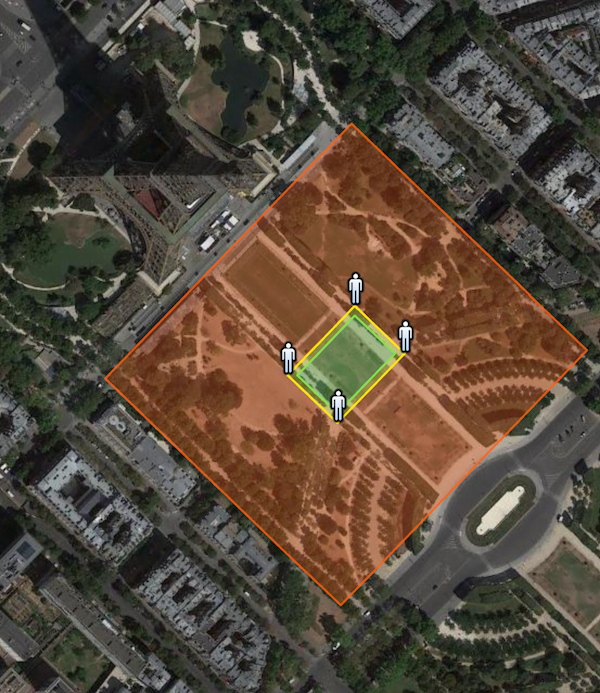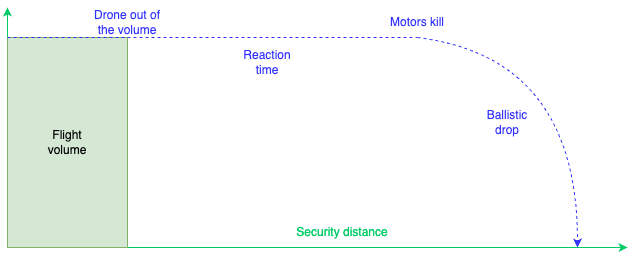To determine the appropriate safety distance from our drone shows, it is necessary to refer to our Concept of Operation which has been validated by the DSAC and which includes directives on the safety distances to be respected.
It is imperative to establish a sufficiently large safety distance to manage potential drone crashes. Since drones are flying objects, in the event of a technical failure, they could land or crash in a secure area outside the public area.
To ensure that drones do not exceed this safety zone, we have observers around the flight area. These people constantly monitor that a drone does not leave the formation.
If a drone approaches too close to the edge of the flight zone, the observer activates a remote control called a kill switch, which cuts the drone's power. From then on, the drone travels a certain distance before touching the ground.

EASA and DSAC have established that the observer has a maximum of 3 seconds to decide whether to cut off the drone's power supply if the flight zone limit is exceeded.
During these 3 seconds, the drone can fly at its maximum speed and be pushed by the tailwind. Once the drone's power is cut, it follows a ballistic curve as it falls to the ground. In addition, debris can bounce for several meters. Therefore, the formula used to calculate the safety distance is as follows:
The total safety distance is therefore calculated by adding the observer's reaction time, the drone's ballistic fall, and the debris rebound. This formula allows us to guarantee total public safety.
Safety distance = (Maximum drone speed + Maximum tailwind) x 3 seconds of reactivity.

At Allumee, the safety distance for our drone shows is 96 meters.
Here we can see an example of an implantation on the Champs de Mars in Paris.
